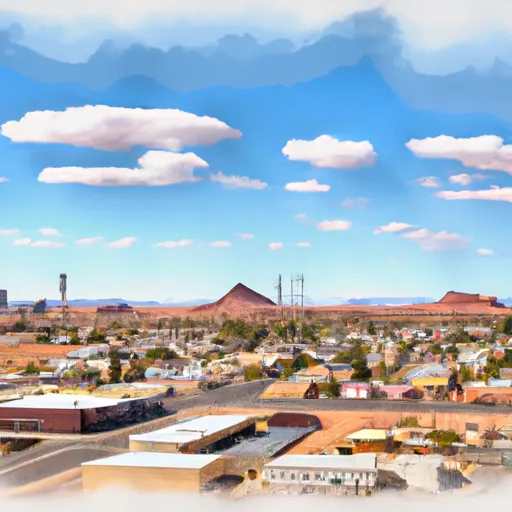-
 Snoflo Premium
Snoflo Premium
Get unlimited access to all our content
With no Ad interruptions! - Start Your Free Trial Login with existing account
Higley
Eden Index
Climate
7.7
•
Recreation
4.1
•
Community
4.3
•
Safeguard
5.6/10

Higley, Arizona is a small suburban town located in Maricopa County, with a population of approximately 14,000 people. The town has a subtropical desert climate with hot summers and mild winters. The area is characterized by low annual rainfall and high temperatures, leading to a semi-arid hydrology system. Outdoor recreation opportunities in the area include hiking, biking, and horseback riding in the nearby San Tan Mountain Regional Park. The park offers several trails of varying difficulty levels, allowing visitors to experience the unique flora and fauna of the Sonoran Desert. Additionally, there are several golf courses and parks throughout the town, providing residents with ample opportunities for outdoor activities.
What is the Eden Index?
The Snoflo Eden Index serves as a comprehensive rating system for regions, evaluating their desirability through a holistic assessment of climate health, outdoor recreation opportunities, and natural disaster risk, acknowledging the profound impact of these factors on livability and well-being.
Climate Health Indicator (CHI): 7.7
Higley receives approximately
205mm of rain per year,
with humidity levels near 46%
and air temperatures averaging around
22°C.
Higley has a plant hardyness factor of
9, meaning
plants and agriculture in this region tend to thrive here all year round.
By considering the ideal temperature range, reliable water supplies, clean air, and stable seasonal rain or snowpacks, the Climate Health Indicator (CHI) underscores the significance of a healthy climate as the foundation for quality living.
A healthy climate is paramount for ensuring a high quality of life and livability in a region, fostering both physical well-being and environmental harmony. This can be characterized by ideal temperatures, reliable access to water supplies, clean air, and consistent seasonal rain or snowpacks.
Weather Forecast
Streamflow Conditions
Middle Gila
Area Rivers
Middle Gila
Snowpack Depths
Middle Gila
Reservoir Storage Capacity
Middle Gila
Groundwater Levels
Recreational Opportunity Index (ROI): 4.1
The Recreational Opportunity Index (ROI) recognizes the value of outdoor recreational options, such as parks, hiking trails, camping sites, and fishing spots, while acknowledging that climate plays a pivotal role in ensuring the comfort and consistency of these experiences.
Access to outdoor recreational opportunities, encompassing activities such as parks, hiking, camping, and fishing, is crucial for overall well-being, and the climate plays a pivotal role in enabling and enhancing these experiences, ensuring that individuals can engage in nature-based activities comfortably and consistently.
Camping Areas
| Campground | Campsites | Reservations | Toilets | Showers | Elevation |
|---|---|---|---|---|---|
| Bartlett Flat | None | 1,886 ft | |||
| Box Bar | 20 | 1,519 ft | |||
| Usery Mountain | 73 | 1,988 ft | |||
| Regional Park - Usery Mt RA | 73 | 1,991 ft | |||
| McDowell Mountain | 76 | 1,875 ft | |||
| Phon D Sutton | 15 | 1,347 ft | |||
| Coon Bluff | 5 | 1,352 ft |
Nearby Fishing
Nearby Ski Areas
Catastrophe Safeguard Index (CSI):
The Catastrophe Safeguard Index (CSI) recognizes that natural disaster risk, encompassing floods, fires, hurricanes, and tornadoes, can drastically affect safety and the overall appeal of an area.
The level of natural disaster risk in a region significantly affects safety and the overall livability, with climate change amplifying these risks by potentially increasing the frequency and intensity of events like floods, fires, hurricanes, and tornadoes, thereby posing substantial challenges to community resilience and well-being.
Community Resilience Indicator (CRI): 4.3
The Community Resilience Indicator (CRI) recognizes that education, healthcare, and socioeconomics are crucial to the well-being of a region. The CRI acknowledges the profound impact of these elements on residents' overall quality of life. By evaluating educational resources, healthcare accessibility, and economic inclusivity, the index captures the essential aspects that contribute to a thriving community, fostering resident satisfaction, equity, and social cohesion.

